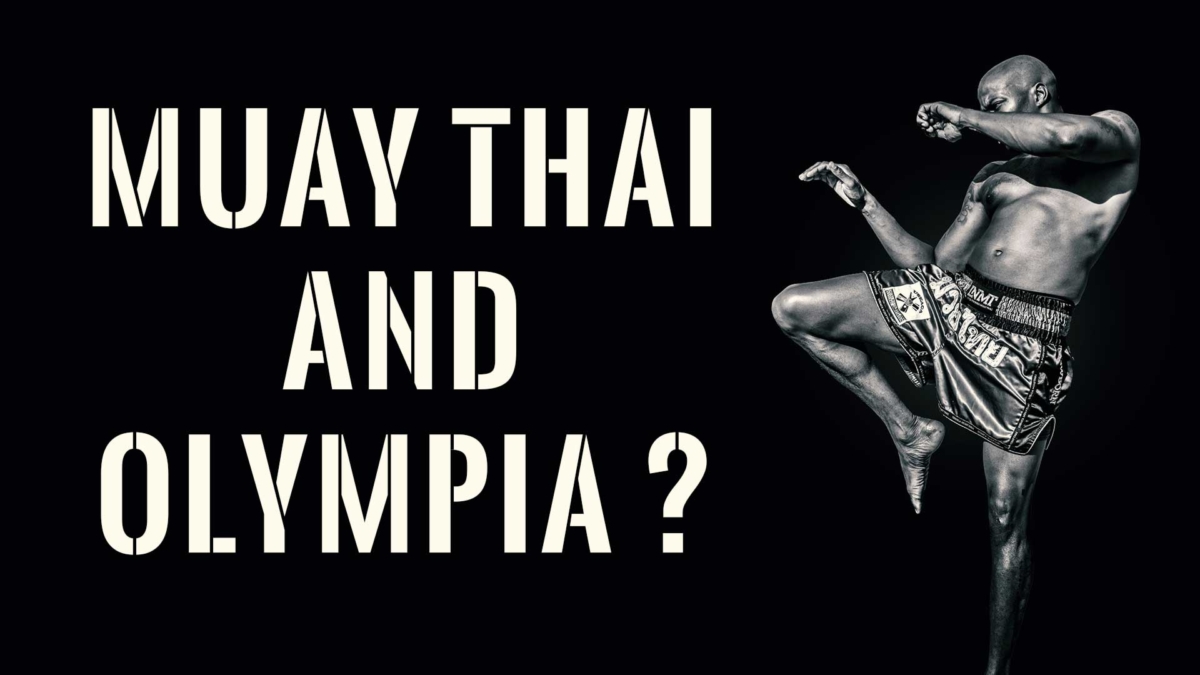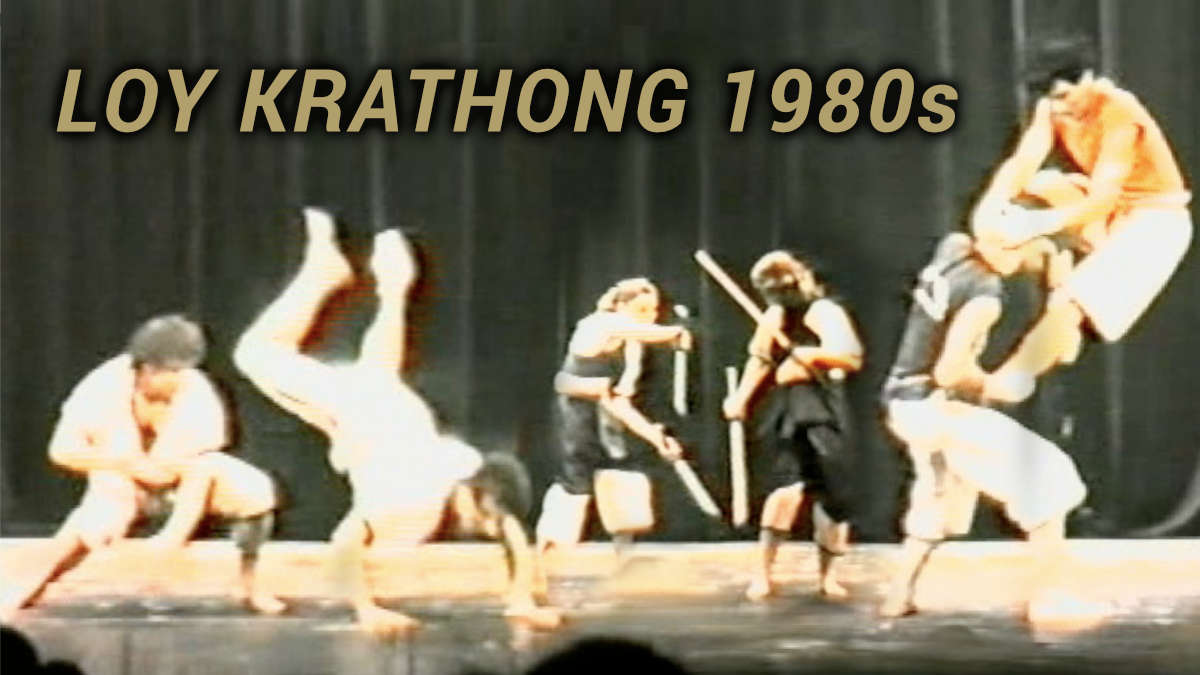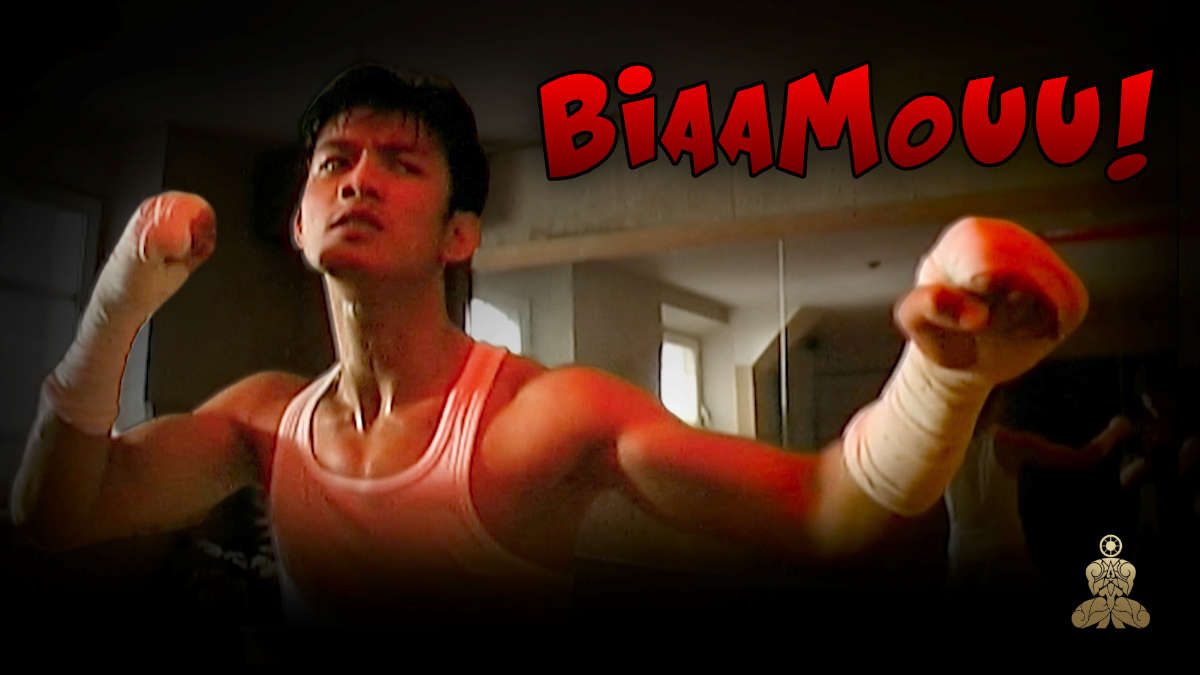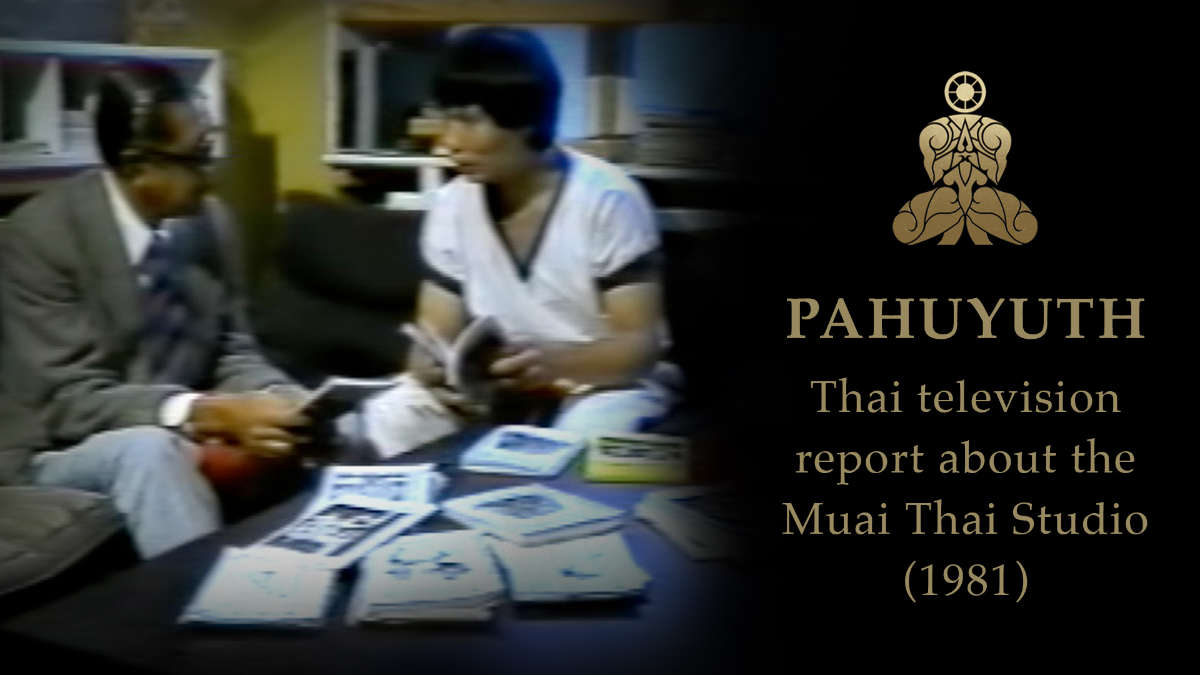Content
Muay Thai and Olympia?
Author: Plaitamin
First published date: 2000 AD
Date of re-release: 18.02.2022
Editorial note: On this page we share an archival text written in 2000 AD (just before the Summer Olympics in Sydney) and published on our old website. Today, in 2022, we will post this text again and unabridged in our blog. For reasons of better readability, a few terms have been changed and some content has been supplemented.
Expanded context: in 2021, a good twenty years after this article was published, the IOC fully recognized a total of six world federations (for Sambo, Muay Thai, Kickboxing but also Cheerleading) at the 138th IOC Session in Tokyo. Those federations can now submit applications to become part of the competition program with their sports at the next Olympic Games in Paris in 2024. Whether this will result in an Olympicization of Muay Thai, however, is still open. For example, The Chinese Wushu was not nominated by the IOC for the Summer Olympics in Tokyo (2020). The following archive text deals with the question of whether Muay Thai can still be classified as Muay Thai in an Olympic environment.
Archive text: Muay Thai and Olympia
In the current situation, shortly before the Olympic Games, national and international discussions are taking place in the form of a discussion round as to whether Muay Thai should become an Olympic discipline in the future or not.
From the countless criteria for pros and cons, which have arisen from different interests and expectations, three large groups can essentially be distinguished: the cultural significance, the Olympic idea and the economic factor.
The cultural significance
The original Muay Thai, which has developed from the traditional martial art (see MUAI, LING LOM, PAHUYUTH) over time to a national martial art, still has its unique, characteristic and cultural imprint with its associated ceremonial rituals as a special feature.
Rituals
The combat sport Muay Thai is still opened today by a ritual (see Wai Khru Ram Muay) consisting of a traditional greeting ceremony, accompanied by exotic sound instruments, in the form of a pantomime dance before the actual start of the fight. On the one hand, this serves the expression of respect and gratitude for human life and the existence of a deity, both one’s own and that of the supposed opponent. On the other hand, the ritual is also a direct indication that the upcoming fight includes the participation of the spectators. In particular, it is also about clarifying the combat objectives, because although both fighters are equipped with deadly techniques, it is not about that in any case.
Magical Objects
Muay Thai fighters carry typical objects with them (see Mongkon, Prejat and Pomalai), which make them believe in magical powers, or a kind of protective property, in order to be successful in the upcoming fight and to survive it unscathed. The accompaniment by the musical instruments during the fight is actually not part of the traditional procedure. The music either adapts to the prevailing combat situation, or tries to animate the fight through faster rhythms. The pants of a Muay Thai fighter are traditionally decorated with a badge, which bears the name of the fighter, or that of the teacher or the institute where the fighter has acquired his knowledge and skills.
The Fight
During the fight, both fighters now try to thwart the opponent’s goals in the form of attack and defense by means of their mastered combat skills. In addition, they will use their specialized fighting styles with one or more tactics. In comparison, this is like chess, where both players can only be successful through tactics. The popularity of the national martial art Muay Thai results from the deployment of techniques and tactics during the fight. Here, the outcome of the fight is by no means to be seen as an indication of the actual qualification of the fighter, but only as the result of his current tactics and his commitment to this encounter.
The betting business of Muay Thai
Especially at Muay Thai events, the passive participation of the spectators through betting is just as much a part of the course of the fight as the actions of the fighters themselves. Betting is played among the spectators during the fight, with the betting objective and the respective variant constantly changing, so that this can even be independent of the actual outcome of the fight. Hosting Muay Thai fights without the traditional part of betting would be possible, but at the same time it would also mean the loss of authenticity.
Injuries and consequential damages
For the combat sport Muay Thai, it is a matter of course that a fight is associated with possible injuries, which, however, hardly lead to serious consequential damage for the fighters. Only through frivolous experiments or an abnormal fighting behavior in the form of arrogance, or very unequal combat pairings, or a fight with foreign martial arts major injuries can be a result. Among other things, this was also one of the reasons why a new martial art emerged from the experience gained from international participation, but it is very far from its origin (see Muay Farang).
Muay Thai as a national treasure
The claim of the Thais to the martial art Muay Thai, which is part of their cultural heritage, is more than justified, at least from the fact of its characteristic traits and its historical course. In contrast, the adventurous claim that Muay Thai is an international world heritage cannot be true in any way.
To advocate Muay Thai as an Olympic discipline also means to expect a transformation or change that inadvertantly deviates in every aspect from its original. It is really only about the willingness of the Thais themselves to opt for such an idea and the associated destruction of their cultural heritage or not. On the other hand, the willingness to compromise of the international community would have be enormously, if Muay Thai was accepted in its entirety, thereby not violating Thailand’s cultural heritage and still allowing participation.
Literature recommendations
The Olympic Idea
The basic idea of the Olympic Games is an international participation in a game with a fixed set of rules, with the aim of international understanding and friendly relations on a sporting level. The first Olympic Games were held in Athens in 1896, from where the cultural peculiarities and rituals of the Games, which take place every four years, can still be found today.
Although the Olympic Games are partly derived from Greek history, today, precisely due to the new formation and the added set of rules, this origin is no longer noticeable. Other martial arts disciplines that are represented at the Olympic Games, such as boxing or fencing, are especially secured by their protective clothing against injuries during the competition, in order to ultimately preserve the Olympic idea. Despite the efforts of the Olympic Committee, the risk of unintentional reactions of the athletes (misconduct), or the technical problems, of which there are more than enough, has not been outruled been, and serious and even fatal injuries have occurred at the Games.
Is Muay Thai compatible with the Olympic idea at all?
For Muay Thai events in the current everyday life, the risk of sports accidents and injuries is inevitable. Due to the peculiarity of Muay Thai, no generally applicable set of rules has been issued to this day. In 1934 AD (2477 B.E.), the Thai Sports Office only drew up guidelines for the martial art Muay Thai, and published them on April 1, 1937 AD (2480 B.E.).
The problem in this for the combat sport Muay Thai is essentially the fact that there is no clearly conceivable sporting character that could be determined by uniform rules. The still unclear area of competence, between sport and culture, or art alone, does not allow the modern administration to find a clear competence. Only in the area of Thai universities and through the established guidelines Muay Thai is somehow integrated in the field of sports, and within the framework of a nationwide jurisdiction, Muay Thai is nevertheless assigned to a sporting discipline. From that and basically, the combat sport Muay Thai can not simply be integrated as a sporting discipline at the Olympic Games.
Amateur sport versus professional sport
The fighting rules of Muay Thai exist exclusively for the professional sector, whereby the individual organizers or stadiums have set them up themselves or taken them over other from others. The most commonly used combat rules come from the two most popular stadiums (Rajadamnern, and the military stadium Lumpinee), which also make the rulebook available to other associations and organizations. In the international arena, however, the various Muay Thai associations and organizations have their own rules, which are limited and aimed at a different combat goal, whereby in some cases the origin of Muay Thai is no longer recognizable. Adopting a single set of rules for Muay Thai at the Olympic Games is likely to prove to be an insurmountable task.
The loss of authenticity
First of all, the traditional greeting ritual of Muay Thai is likely have no meaning for the Olympic Games. Since this ceremony is unrelated to the performance-related competitions, there is no direct influence on the fight decision. As a result, the traditional dance in sporting competitions would no longer be included as a component, and a negative change in relation to the original Muay Thai would result.
At the Olympic Games, great importance is still attached to the fact that in all martial arts disciplines (boxing, fencing…) the appropriate protective equipment is mandatory for the athletes. Just like in boxing, where both opponents are equipped with appropriate boxing gloves.
Is Muay Thai still Muay Thai with protective equipment?
For the martial art Muay Thai, however, the athletes would then have to be additionally equipped with elbow protectors, knee pads, foot guards and shin guards. The already developed foot and shin guards have the necessary protective effect, but they restrict the freedom of movement of the athletes. With the knees and elbow protectors, on the other hand, you only have variants that serve as personal protection and are anything but useful for actual use. The execution of precise techniques with the elements elbows and knees alone does not allow protective equipment. The best protection for both athletes would still be to dispense with the elements of elbow and knee, whereby the resulting martial art could no longer be called Muay Thai.
In further comparison with the discipline of boxing, fighting rules regarding the weight and shape of the boxing gloves, the weight classes, the fight rounds, the accompanying music and the evaluation of fouls cannot be compared with Muay Thai. This makes it clear that the fighting rules of Muay Thai in their current form are impossible to use for the Olympic Games.
The economic factor
The interest in the integration of Muay Thai at the Olympic Games has also been driven forward for an economic reason for Thailand, whereby of course the wishes of all participants are to the same extent.
Between cultural heritage and economic interests
The move to make Muay Thai an Olympic discipline would not only allow the hosting of international events, but also the economic importance would inevitably develop. Ultimately, the only question is to what extent the Thais themselves are prepared to lose their cultural heritage in favor of possible economic successes.
A Muay Thai without Thai involvement?
International experience to date has shown that the participation of Thais is insignificant due to the existing weight differences alone. Either the Thai fighters participated under the condition of a weight restriction or a technical restriction, or not at all. Thus, the majority of competition events take place without Thai participation, and certainly not in Thailand itself, although almost all major foreign organizations and associations are founded and recognized by the Thais. From a purely economic point of view, Thailand has hardly anything to gain from the events of these associations. As a result of this economic initiative, countless Muay Thai variants have emerged on an international level (see Muay Farang), which have nothing to do with the origin and seem strange to the Thais, because only the name is the same.
How could Muay Thai be preserved?
It is undisputed that the international spread of Muay Thai contributes to both the cultural care and economic viability of Thailand, provided that the full original form is associated with the name Muay Thai. The same applies to the Thai martial arts rules used at martial arts events, whereby the fights should actually only take place in Thailand, unless these rules are taken as a benchmark internationally.
But also from Thailand, or the founders of the various organizations, initiative and motivation is urgently required to distance themselves from the international falsification of Muay Thai for the preservation of Thai cultural heritage, or to correct the inaccuracy. This includes, among other things, the correction to award the name Muay Thai actually only after recognition or examination in Thailand under Thai conditions, since it is the direct dissemination of Thai knowledge and Culture.
Hoped-for side businesses
The typical clothing and equipment at the Olympic Games is one of the most important economic sectors for the producing country. However, the current martial art Muay Thai has only a very sparse clothing and equipment, so that for the Thai manufacturers hardly a profitable business would be expected. In addition, with international participation and any additional equipment for the Olympic Games, the choice of manufacturer would be anything but Thailand, and thus no economically profitable perspective arises.
Ergo: Only by the fact that Muay Thai exists as a unique and special Thai system on the international market an economic significance can arise from it.
Conclusion
The Olympic idea reflects an opportunity for Muay Thai to gain international recognition, but at the same time it also entails the loss of Thai cultural heritage. But perhaps it is part of human normality that even the Thais have to lose what they have in order to understand what they had.




